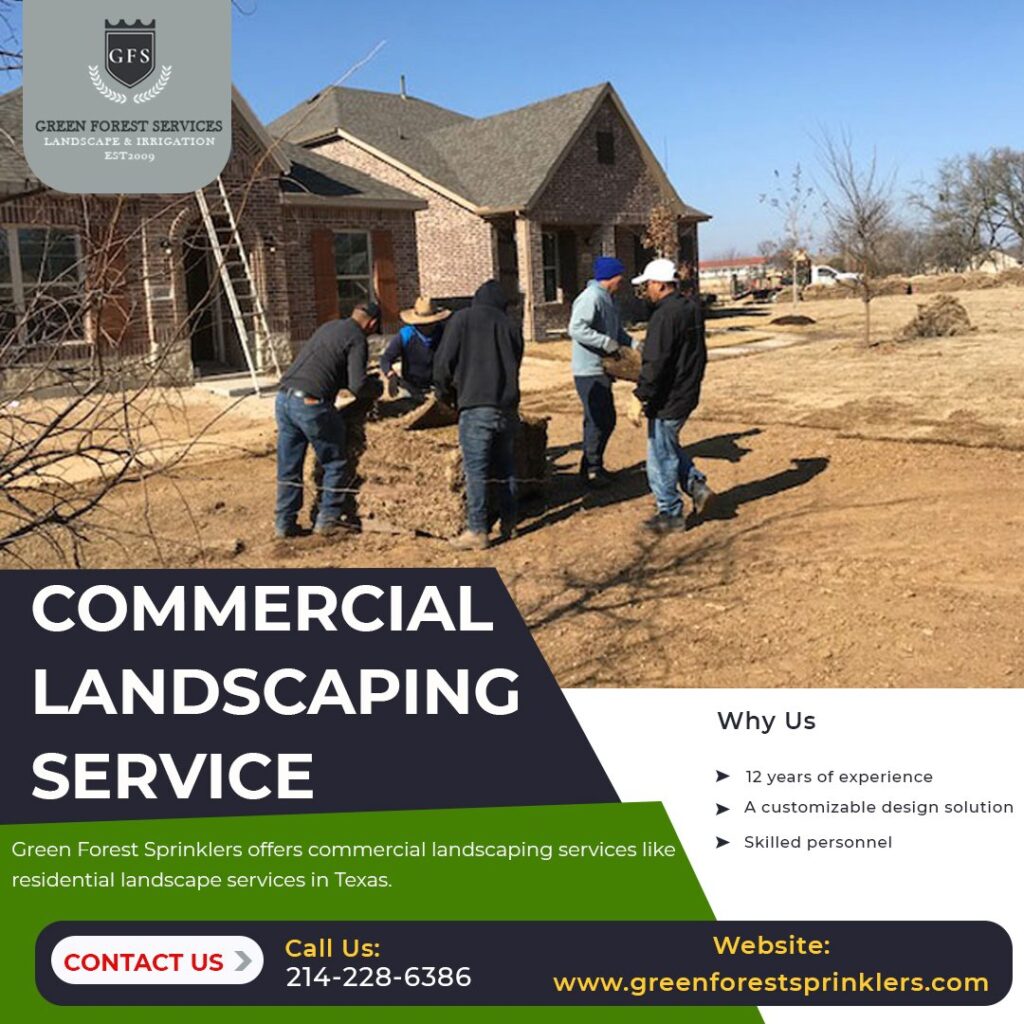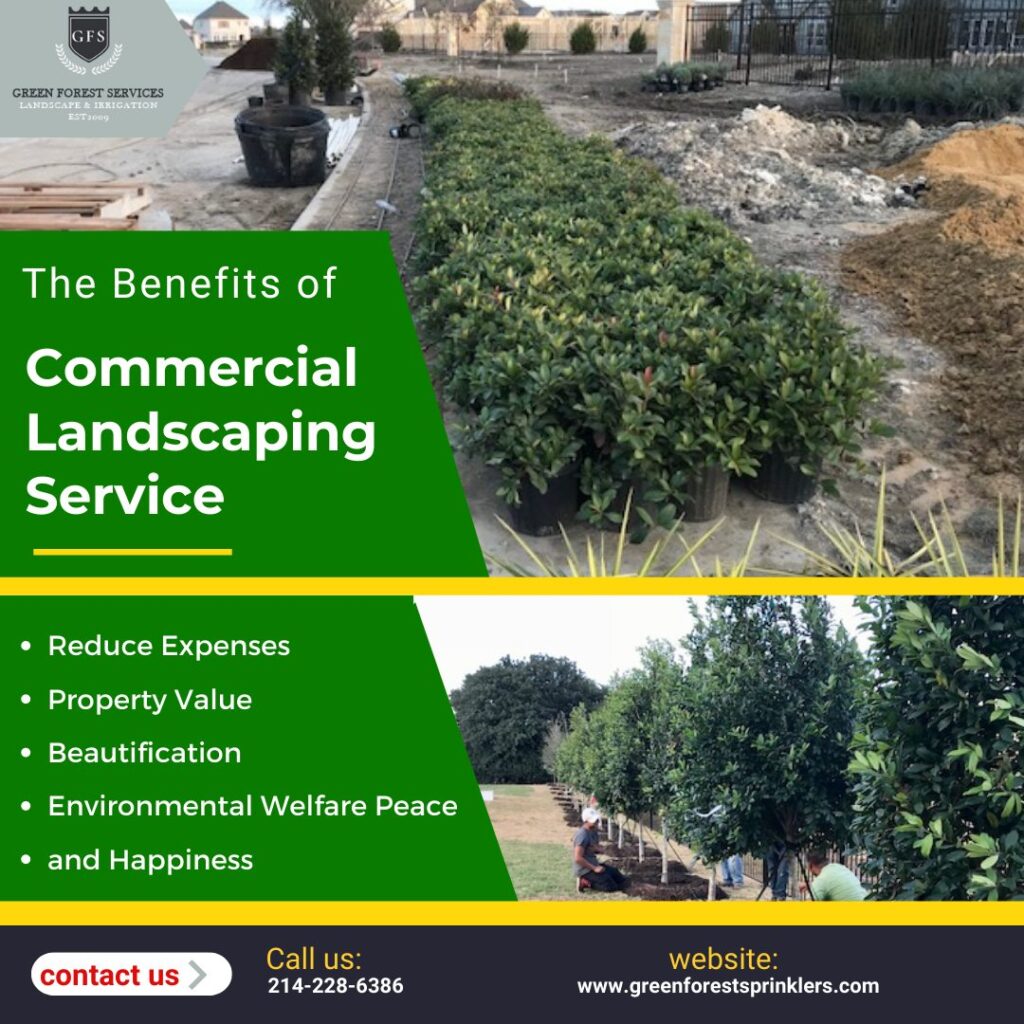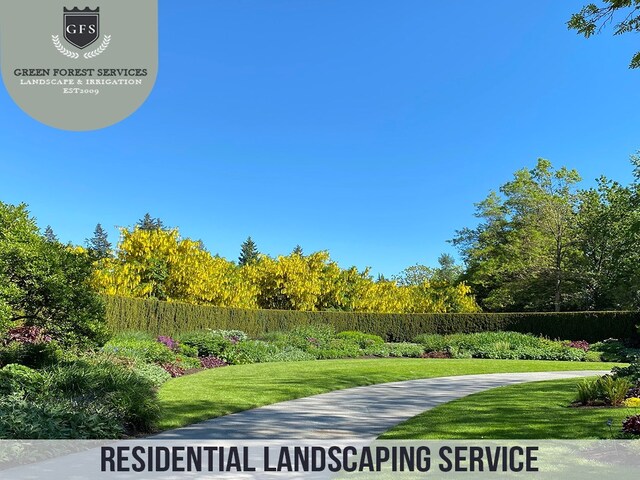Landscaping is an important aspect of commercial properties as it can improve the overall aesthetic appeal, provide a safe and inviting environment for employees and customers, and increase property value. However, landscape installation can also pose various safety risks if proper precautions are not taken. Here are some basic safety rules for landscape installation in commercial properties.

Use proper personal protective equipment (PPE)
Personal protective equipment is essential when working on a landscape installation project. Workers under Green Forest Sprinklers specializing in Commercial Landscape Installation wear gloves, safety glasses, and appropriate footwear to protect themselves from hazards such as sharp tools, and slipping on uneven surfaces.
Identify and locate underground utilities
Before starting any excavation work for Commercial Landscape Installation, it is important to identify and locate all underground utilities such as gas, water, electric, and telecommunication lines. This can be done by calling the relevant utility companies and requesting a utility locate service. Failure to identify and locate underground utilities can result in serious accidents, damage to property, and costly repairs.
Use proper tools and equipment
Using proper tools and equipment is essential for ensuring the safety of workers and bystanders. Tools should be well-maintained and properly sharpened to prevent accidents. Heavy equipment such as tractors, excavators, and bulldozers should only be operated by trained and licensed professionals.
Provide adequate lighting
Landscaping work often takes place outdoors and may continue into the evening hours. It is important to provide adequate lighting to ensure worker safety and prevent accidents. Lighting can also deter criminal activity and make the property safer for employees and customers.

Ensure proper drainage
Proper drainage is essential for preventing slip and fall accidents and maintaining the integrity of the landscape installation. Water should be directed away from walkways, parking lots, and other high-traffic areas to prevent pooling and ice buildup. Drainage systems should be installed by licensed professionals and regularly inspected and maintained to ensure proper function.
Use caution with chemicals
Landscaping often involves the use of chemicals such as herbicides, pesticides, and fertilizers. These chemicals can be hazardous if not used properly. Workers should wear appropriate PPE when handling chemicals, follow the manufacturer’s instructions, and dispose of chemicals according to local regulations.
Install proper signage
Proper signage is essential for preventing accidents and informing workers and customers of potential hazards. Signage should be installed to indicate areas of excavation, potential tripping hazards, and areas where heavy equipment is operating. Signage should also indicate the location of emergency exits and first aid stations.
Regularly inspect and maintain equipment
Regular inspections and maintenance of equipment can prevent accidents and ensure proper function. Equipment should be inspected before each use for signs of damage or wear and tear. Any issues should be addressed immediately, and damaged equipment should be taken out of service until repairs are made.
Final note
Landscaping can enhance the beauty and safety of commercial properties, but it can also pose various safety risks. By following these basic safety rules, property owners and contractors can minimize the risks associated with landscape installation and ensure the safety of workers and customers.





